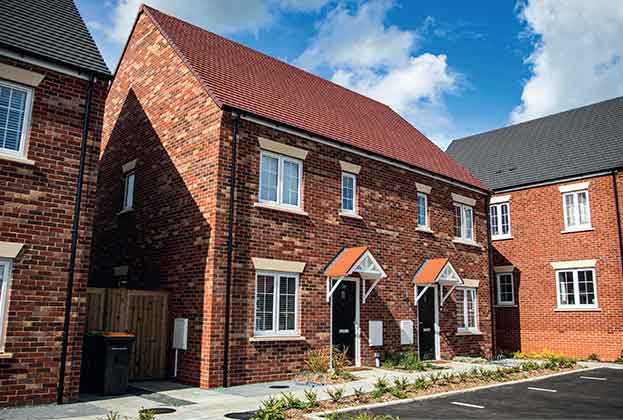General needs rent is the majority of affordable housing, but for-profit ownership is limited for now
General needs rented housing is, by far, the largest category within affordable housing. It made up 84% of all affordable homes and 72% of the homes owned by private registered providers in 2019–20, almost 2.2 million homes. We estimate this stock is worth £270 billion at existing use value. Little wonder then that FPRPs have only scratched the surface here, owning just 0.1% of stock.
The supply-demand fundamentals for general needs housing are strong. Local authority waiting lists provide a ready-made list of potential tenants, keeping occupancy high.
Most FPRPs provide a mix of shared ownership and affordable rented homes. But as more FPRPs register, there will be greater competition for stock. Providers who want to build large, diverse portfolios will have to deliver more affordable and social rent.

Policy risk
In April 2020, the social housing rent cut came to an end. Registered providers were allowed to raise their rents for the first time since 2015–16, following four years of 1% rent falls. Is there a risk we’ll see further rent cuts?
It would not be the first time registered providers have had to face a U-turn on rent policy. In 2013, the Coalition Government announced a ten year rent settlement where social rents would rise at CPI + 1% from 2015–16. Just two years later, the Chancellor announced rents would instead fall by 1% annually for four years. This kind of policy volatility could put private investors off from funding more affordable rent homes.
Slowing growth
Growth in affordable rented stock is likely to slow. We estimate First Homes will cut supply from developer Section 106 contributions by over 3,500 homes per year. The new, larger Affordable Homes Programme (AHP) mitigates this fall. Had both First Homes and the new AHP been in place for the last three years, there would have been 2,698 more Affordable Rent starts per year.
Rented homes made up the lion’s share of Section 106 over the last three years. Developers contributed 12,039 affordable rented homes on average each year, 52% of Section 106 delivery. And they delivered a further 3,784 social rented homes.
Government wants First Homes to make up 25% of affordable homes built through Section 106. Social rent supply will be protected. But we expect this policy to reduce the number of affordable rented homes delivered through housebuilder contributions. Had First Homes been in place over the last three years, we would have seen -3,506 fewer affordable rented homes per year.
Between affordable rent, London affordable rent and social rent, rented homes made up 76% of grant-funded housing starts over the last three years. This will change in the next AHP. Government wants half the homes built in the 2021-26 AHP to be home ownership products.
Government plans to fund 180,000 homes through the 2021-26 AHP. With half of these going into ownership tenures, that leaves grant for 90,000 discounted rent homes, an average of 18,000 per year. That’s 43% higher than the 12,602 started on average over the last three years.
The rational choice?
New delivery is not the only way for new entrants to acquire affordable rented homes. We expect to see more housing associations rationalise their portfolios as they seek to contain costs and unlock financial capacity. FPRPs will face stiff competition from housing associations and local authorities for mixed tenure housing.
We expect housing associations to rationalise their stock to unlock financial capacity for sustainability improvements
Chris Buckle, Director, Residential Research
We expect housing associations to continue to acquire most stabilised mixed tenure and older persons and supported housing portfolios. FPRPs will be the main buyers of stabilised shared ownership portfolios as they are able to acquire at scale – and housing associations will reserve capital for general needs and specialist portfolios, and development.
Local authorities, itching to use their unlocked housing revenue account borrowing, will also be active in this market. There are already examples of local authorities buying rented stock from a private registered provider, such as East Riding of Yorkshire. These transactions are unlikely to be the last.
Read the articles within Spotlight: Private capital in affordable housing below.
.jpg)
